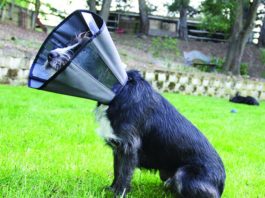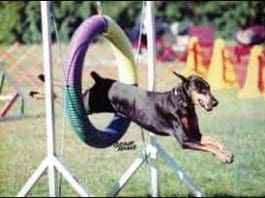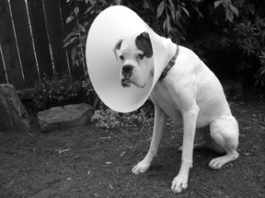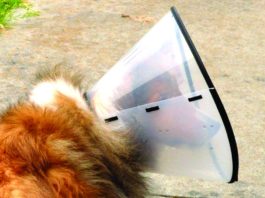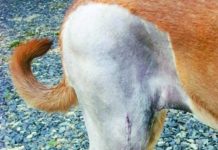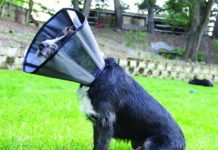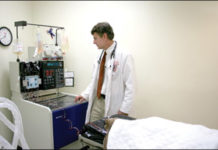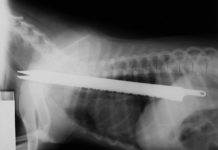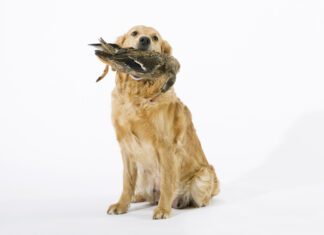Cranial Cruciate Ligament Repair for Dogs: Your Options
The truth is, we do not have a perfect solution for cranial cruciate ligament tears in dogs. Research is constantly evolving and we are still in search of the perfect fix. In humans, a synthetic or biologic ligament is placed where the damaged ligament used to sit. This was tried in dogs, but the outcomes were never good. The replacement ligaments were just not well tolerated. Consequently, something different had to be done.
Anaphylaxis in Dogs
Anaphylaxis in dogs is an immediate, severe, life-threatening allergic reaction. Potentially fatal symptoms can appear as quickly as within 5 minutes of exposure.
2017 Best Dog Cone Alternatives
The term recovery collar is becoming the standard term to refer to what has been called an Elizabethan collar, a pet cone, or more humorously, a lampshade, a pet radar dish, and, of course, the misnomer cone of shame. There is no shame in needing help! The term Elizabethan collar is still heard frequently, but because it tends to be shortened to e-collar and because thats also a shortened version of electronic collar, the phrase is falling out of use for this application.
Get Your Dog to Rest After Surgery
Stay, and "Leave It." One can also work on increasing the duration of these behaviors at this time.üToss your dog's kibble onto a "snuffle mat" to increase the amount of time it takes him to sniff out and consume each nugget. These washable mats are easy to make or can be store-bought.üDr. Jessica Hekman uses trick training and scent-work exercises (seen here) to keep her usually busy English Shepherd
How to Keep a Dog Calm After Surgery
and then waits for Tater to offer an approximation of "dead." (Above) Once Tater offers "dead
Comfortable Dog Cone Alternatives
Are the classic plastic cones really all that bad? It depends on which dog you ask. Some dogs seem to accept the weight of the heavy plastic, the restricted visibility imposed by the opaque material, the need for increased clearances around the house, and even being gouged by the thick plastic tabs that are supposed to be belted by the dog's collar at the base of the cone. Today there are a number of alternatives to the classic Elizabethan collars to prevent a dog from licking a wound, aggravating a hot spot, tearing out his surgical stitches, or removing a bandage. The alternatives offer a dog greater comfort, better mobility, and improved visibility.
Alternatives to Surgery for Ligament Injuries in Dogs
Dogs go lame for all kinds of reasons. Arthritis, Lyme disease, paw injuries, muscle sprains, bee stings, interdigital dermatitis, and dislocated kneecaps can make any dog limp. But when an active dog suddenly can't put weight on a hind leg, the most common diagnosis for more than a million American dogs every year is a torn cruciate ligament. In 2003, according to the Journal of the American Veterinary Medical Association, the cost of treating those injuries exceeded $1.32 billion, and the price tag keeps rising. The most common prescription for canine knee injuries is surgery. Unfortunately, operations don't always work and some patients, because of age or other conditions, are not good candidates. In recent years a nonsurgical approach called conservative management" has helped thousands of dogs recover from ligament injuries
Bone Marrow Transplants Offer a Promising Treatment for Canine Lymphoma
Exciting news regarding bone marrow transplants for dogs with lymphoma has recently emerged. North Carolina State University’s College of Veterinary Medicine in Raleigh is the first university in the world to open a canine clinical bone marrow transplant (BMT) unit. Dr. Steven Suter, assistant professor of veterinary oncology at NCSU, is about to perform his 30th transplant, all done over the past two years. Lymphoma, also called lymphosarcoma, is one of the most common cancers to occur in dogs. While it used to be considered a disease of middle-aged and older dogs, those demographics have changed in the past 5 to 10 years, with more and more young dogs being diagnosed. Golden Retrievers have a particularly high risk for this type of cancer.
Warning Signs After Spaying a Dog
Most dogs who have spay surgery go through the spay incision healing process without problems. Healing tissues are fragile, however. It is your responsibility to pay attention to the instructions you receive post-surgery.
Alternatives to Canine Surgery
I have a young Great Dane named “Bugsy.” I acquired him from a Dane breeder with a good reputation when he was four and a half months old. My only misgiving about the handsome pup was the discovery he had been raised on a terrible food, a brand made with poor quality ingredients and way too much protein and fat for a growing Dane puppy. Though many people think that big dogs must require lots of protein and fat to “grow so big,” giant breed dogs should be fed lower percentages of these nutrients.
Post-Operation Acupressure for Dysplastic Dogs
After consulting with three veterinary surgeons, it was decided that the best course of action for my dysplastic dog was a triple pelvic osteotomy (TPO), where the hip is reformed to create a socket. This procedure was considered experimental 10 years ago when Oak was much in need of it. Today, it is a common surgery for hip dysplasia.
12 Tips to Avoiding Trips to the Emergency Vet
Every year, thousands of dogs are treated in emergency veterinary hospitals across the country. I know; I spent nearly a decade as an emergency-room veterinarian. I always found it interesting that many of the most common injuries and illnesses I saw in emergency practice were also some of the easiest to prevent! Many of these problems can be avoided with a little common sense and preventative medicine.



